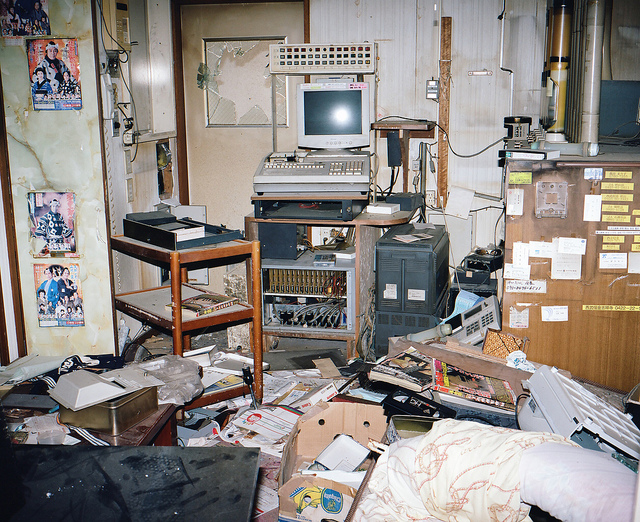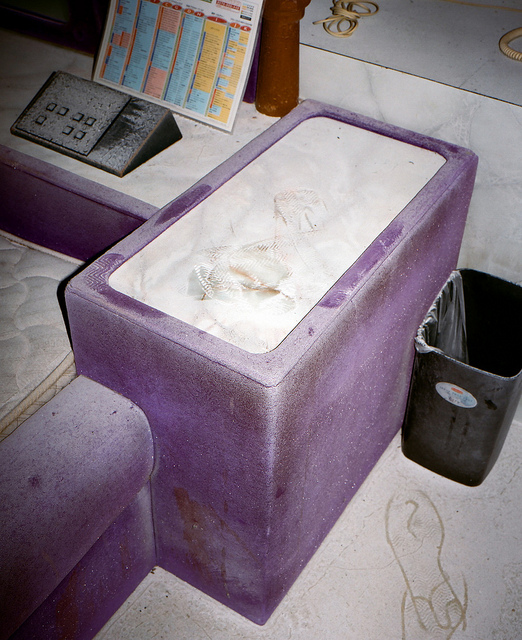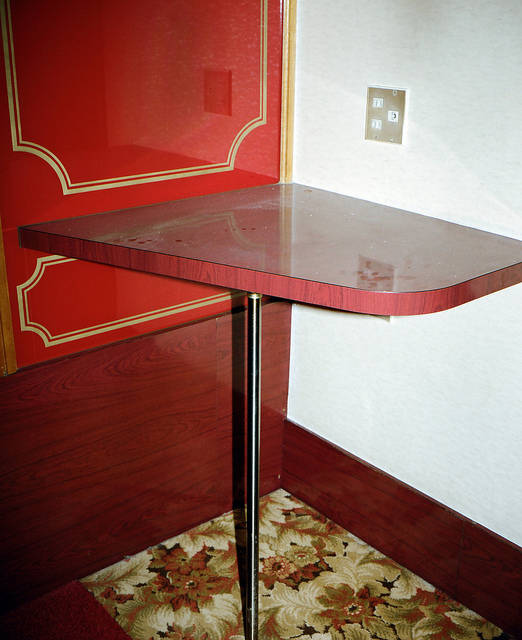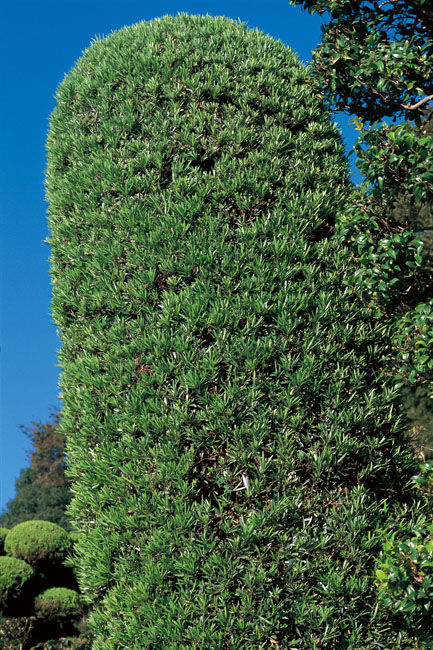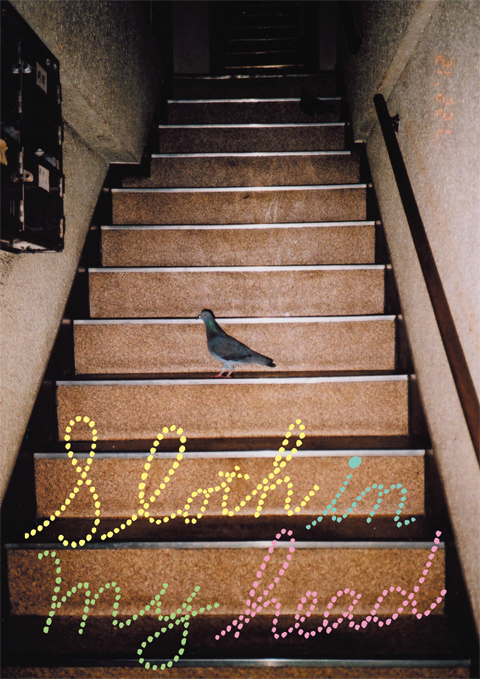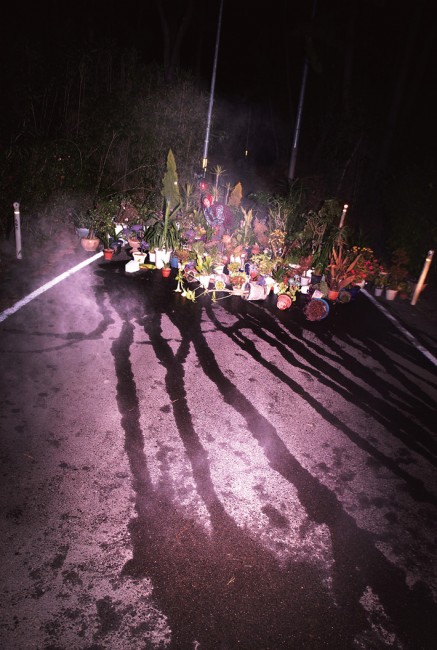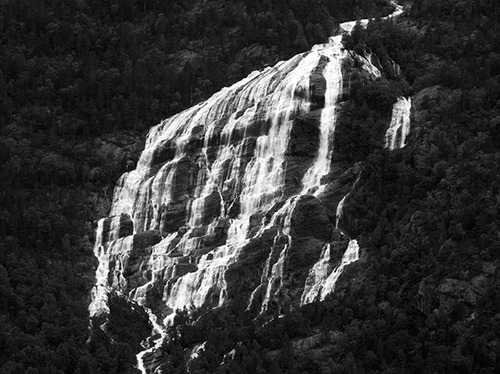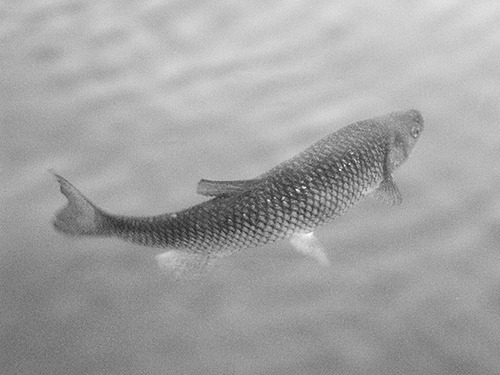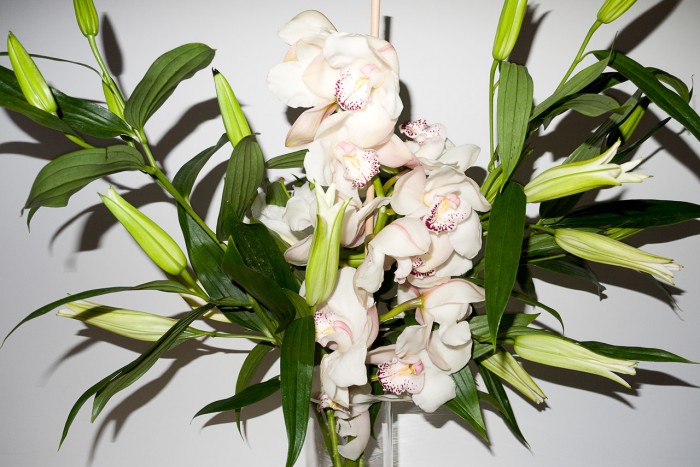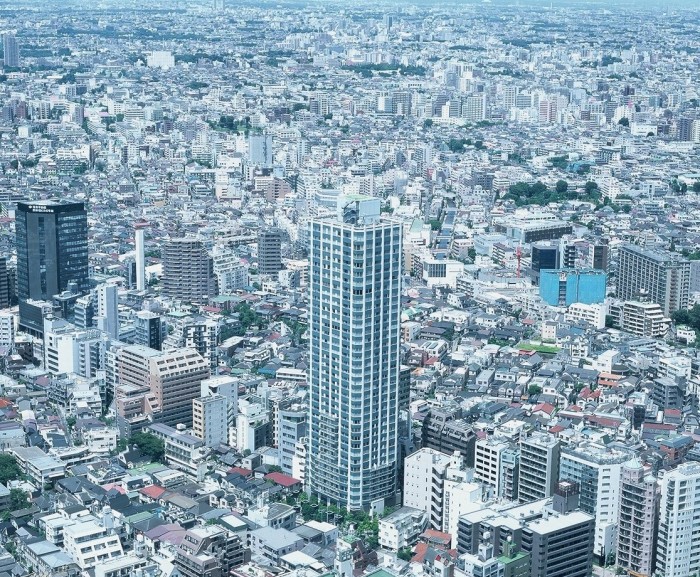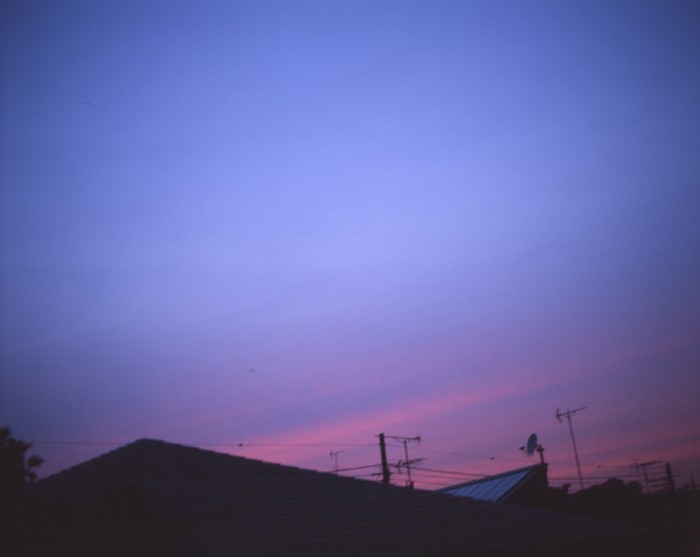
© Nobuyoshi Araki
Nobuyoshi Araki, “Sentimental Sky” at Rat Hole Gallery
It’s unlikely that this show would convert any non-believers to the Araki camp, but for those of us who are already in his camp, this was a good if not quite transcendent show. Araki recently moved out of the Setagaya apartment that served as the backdrop for so many of his photographs, and the centerpiece of this exhibit was a digital loop of color photographs of the sky taken from this most iconic of Japanese balconies. None of the images were particularly stunning, but the video worked as a whole. A young photographer could never get away with this kind of work, but then again, they’re not Araki. Some black and white photographs taken on the balcony, a few paintings of Yoko and a strange series of sky photos projected onto a nude Kaori rounded out the show.
Alejandro Chaskielberg, “Alejandro Chaskielberg” at 916 Gallery
916 Gallery is an incredible space run by the top dog in Japan’s commercial photography game, Yoshihiko Ueda. I thought that such things didn’t exist in Tokyo: 916 is a massive gallery on the 6th floor of an industrial building way out in Hamamatsucho. Forget Shinjuku, what’s more Blade Runner than shimmering office buildings, industrial warehouses, a useless monorail whizzing overhead? At any rate, the space must be seen to be believed, but if they continue to run out tame exhibitions like this, it will all be for naught.
Sakiko Nomura, Ryudai Takano, Yurie Nagashima, “Missing You” at Hikarie 8/ Cube 1, 2, 3
Hikarie is a new mall in Shibuya with an art space on the 8th floor. This was a three person show of photographers who I suppose could be connected through the genre of “personal photography.” The strongest connection you might find, though, was that you could walk away with a new bedding set courtesy of Nomura bedsheets and a Takano pillow. Each photographer showed representative work: Nomura’s intimate black and white photographs, Nagashima’s atmospheric work from “Swiss,” and Takano’s abstract portraits of male bodies. Mostly forgettable, except for a long vertical strip of paper over Takano’s largest (and most explicit) photo. I thought it had been placed by the gallery to spare passersby the apparently unthinkable trauma of seeing a male organ as they took a break from shopping, but it was actually Takano’s own choice.
Shinya Arimoto, “ariphoto selection vol. 3” at Totem Pole Photo Gallery
Arimoto holds a few exhibitions every year, usually showing his recent street portraits shot in Shinjuku. This time, he was showing work from Tibet, which he’d taken in 2009 on assignment for Playboy. (Arimoto had spent a much longer period of time there before.) There were a couple of nice portraits, especially one of a Tibetan biker, and as always the prints were extremely well-made. Still, something seemed missing: most of the photos were a little too straight-on, leaving little impression. Arimoto once did a show which consisted pretty much of portraits of bugs he’d found in the forest; at the time I thought the work was too strange, but it’s stayed with me. I would be surprised if the same thing happened with this show.
Haruto Hoshi, “St Photo Exhibition 14: Osaka” at 3rd District Gallery
Hoshi remarked wistfully that it would be years before anyone saw the value in his photos, and it does seem ironically true that snapshots of any kind—”street” or not—look freshest when they’ve been pulled out of storage after being forgotten for a few decades. Hoshi’s work is ready to be appreciated now, though, as the heir to the Katsumi Watanabe/Seiji Kurata lineage of “deep” street photography. For the moment, it looks like he’s about to find a new working rhythm, and try shooting some different subjects. He’s built up a significant archive of photos over the last five or six years, and now he’s going to sit back and edit. I hope there isn’t a decades-long wait before it sees the light of day again.
